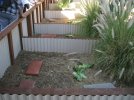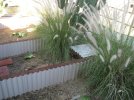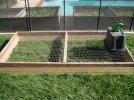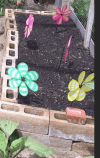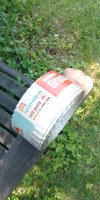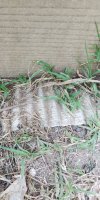I'm in the planning stages of an outdoor enclosure for my Hermanns Tortoise and I'm trying to decide how to set up the outer wall/barrier.
My two top options right now are:
Fir wooden fence pickets, cut in half (3 feet) or thirds (2 feet) with half buried in the ground and half above ground to make a nice picket fence for the enclosure.
or
Cinder block pavers, also half buried and half above ground. Something like 16"x8"x2" blocks so about 8" above and below ground. Longer would be better, but 16" seems to be what is available around here. This is by far more durable than the wood, but also more expensive and doesn't provide as tall of a barrier unless I use multiple layers, which would make it even more expensive.
If you have other suggestions that will work and don't cost a lot, I am definitely open to other options.
I also plan to build a full "chicken coop" about 6 feet tall around and above the enclosure to keep predators out (particularly the neighborhood Peregrine Falcons and a few ravens now and then) while allowing easy walk-in access to the area as it is needed, but I want to get the basic setup done as soon as possible so I can get the plants and landscaping started so they can be more established before it is warm enough for the tortoise to start spending a significant amount of time outside.
My two top options right now are:
Fir wooden fence pickets, cut in half (3 feet) or thirds (2 feet) with half buried in the ground and half above ground to make a nice picket fence for the enclosure.
or
Cinder block pavers, also half buried and half above ground. Something like 16"x8"x2" blocks so about 8" above and below ground. Longer would be better, but 16" seems to be what is available around here. This is by far more durable than the wood, but also more expensive and doesn't provide as tall of a barrier unless I use multiple layers, which would make it even more expensive.
If you have other suggestions that will work and don't cost a lot, I am definitely open to other options.
I also plan to build a full "chicken coop" about 6 feet tall around and above the enclosure to keep predators out (particularly the neighborhood Peregrine Falcons and a few ravens now and then) while allowing easy walk-in access to the area as it is needed, but I want to get the basic setup done as soon as possible so I can get the plants and landscaping started so they can be more established before it is warm enough for the tortoise to start spending a significant amount of time outside.

